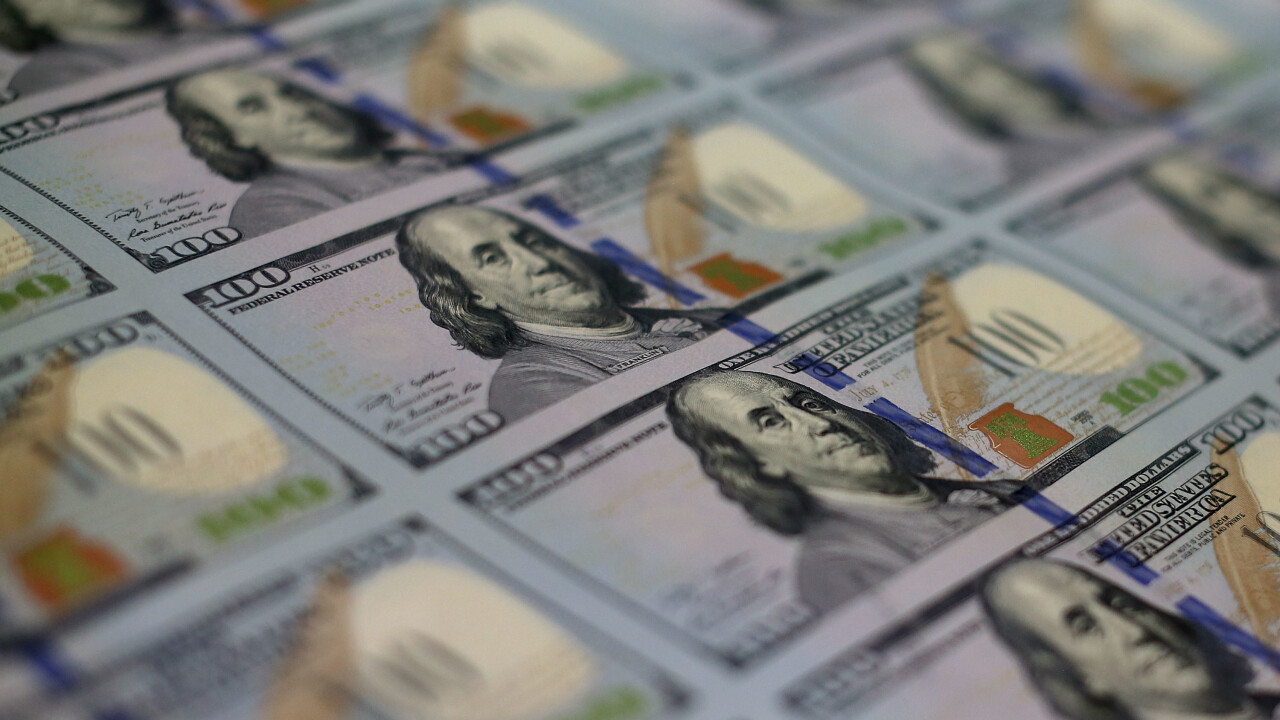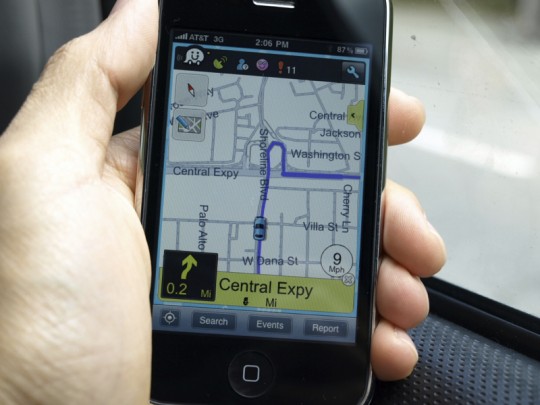
This post originally appeared on Geektime.
There are five strategies, or patterns, that set apart leading internet startups – or the billion-dollar club companies – from all the rest.
For the past several years I have been intrigued by what constitutes a successful habit. I’ve poured over myriads of books, professional articles, and TED Talks about consumer behavior, habit forming, thought patterns and the human brain’s capacity for ongoing evolvement. I’ve studied a host of startup ventures in quest of the patterns behind their success.
Coupled with my penchant for analyzing the performance of multi-billion dollar consumer-internet entities, I came to realize that there are several defining patterns that set the trajectory of their meteoric rise.
Celebrated football coach Tony Dungy once said: “Champions don’t do extraordinary things. They do ordinary things, but they do them without thinking, too fast for the other team to react. They follow the habits they’ve learned.”
Charles Duhigg quoted Dungy’s coaching philosophy in his book “The Power of Habit,” in which the story is told of the Tampa Bay Buccaneers, once a perennial loser until Dungy got the team to change some of its habits, or behavioral patterns, and in a short time led them to the playoffs and turned it from an underdog with no future prospects to becoming one of the strongest teams in NFL history.
The book is a fascinating account of how habit changing can pave the road to success. It demonstrates how failing companies were able to realize their full potential after changing some of their operational patterns. Duhigg asserts that the climb to the top inevitably entails identifying the habits that are non-conducive to success and changing them.
But the question is: To what exactly? Well, according to Dungy – to winning habits.
Following the trajectory of billion-dollar consumer web companies such as YouTube, Pinterest, Chegg, Groupon, Airbnb, Shazam, Instagram, Waze, and Twitter, what I like to call the Billion Dollar Club (or BDC) made me realize that all of these giants adopted the same five patterns, or fundamental habits, that awarded them success almost overnight and bought them a ticket into the billion-dollar club.
Following are my own observations on what these habits are.
Habit #1: Separating emotion and practicality: Sending out an emotional or a functional message
When it came to new products in the market, each of the BDC giants introduced their product to the market with one succinct message that was either functional – underscoring the practical aspects of their product, or emotional – conveying the emotional or psychological benefits for the user.
Here are a few examples: Twitter aimed at our emotional-social needs, prompting us to share our personal experiences and thoughts with friends.
At the other end of the spectrum, Shazam responded to a straightforward practical need for a tune-recognition search engine in a touch.
Pinterest conveyed a clear practical initial message as well – save and share your pictures in a click, via the Pin button; YouTube allows us to share videos with the world; Airbnb offers a marketplace for vacation-rentals.
Google made searching the web practical by introducing an easy to use, plain yet elegantly designed homepage featuring just a search bar; and Apple appealed to a growing desire to own the technological marvel called a PC by stating its mission: “a computer in the hands of everyday people.”

Today it’s hard to imagine a time when we weren’t Googling, tweeting or pinning.
Behavioral economists such as Prof. Daniel Kahneman and Dr. Dan Ariely found that we tend to make quicker decisions when the underlying message appeals to our emotions or to our logic. That decision applies to an entire gamut of responses wherein we become aware of the product, examine and accept it and eventually purchase it.
Most important of all, it will brand the product into our consciousness and create a perceived need for it. This means that the process of creating awareness for an innovative groundbreaking product is as crucial as its development.
This modus operandi has a clear objective: it aims to tap into our minds – fast and it does this by directing the right message to the right part of our brain, making it an effortless decision to choose and use the product.
Habit #2: Getting extreme: Developing one simple, yet extreme, feature
When the BDC introduced us to their products, all giants chose to do so with the introduction of a new cognitive message via one principal feature. That only one killer principal feature is the DNA of the App on which everything else is built later on.
Applications such as Pinterest, Shazam, YouTube, GetTaxi, Instagram, Snaptchat, Twitter and Waze deliver user value in just one, in some cases two, clicks which makes them extremely accessible and user friendly and most off all – an inseparable part of our daily routine. That one small feature is literally branded into our fingertips – and that’s what’s so extreme about it.
And there’s a good reason for this: our level of stimulation is constantly on the rise and the gamut of our responses decreases correspondingly.
We’ve become so habituated to a high degree of stimuli and adept at ignoring it that we get bored easily and little seems new to us. The “extremization” of the message or user experience has become sin qua non for achieving differentiation in the cacophony of publicity messages.
Perhaps the most famous example of such an “extremization” belongs to the late iconic founder of Apple, Steve Jobs who from the onset insisted on an extreme approach and minimalistic look for the company’s product design.
Despite strong headwind from his employees he insisted on launching a revolutionary music player – the iPod – that features just one button. He repeatedly sent the engineers back to the drawing board until they came up with the world’s first single-button MP3 player. Now that was extreme!
Jobs stuck to the same approach when launching the iPad in which he adamantly refused to include a USB port in order to maintain the simple and sleek design. And the customers just couldn’t get enough.
Habit #3: Making a promise: Aligning user expectations with the product
When a company launches a new product it makes an initial promise, so to speak, to its customers – a message that tells users what they can expect upon using the product. This can be a formal message –such as a tagline – or an implicit one.
In other words, the company aligns user expectations with the product via the promise. And the big deal is that the promise is small.
Twitter simply offered us 140 text characters with which to share our thoughts with others. That’s it. That was the promise that kept us going. Today, its tagline is social networking and micro blogging, but its first promise remains in our minds.
Pinterest, another member of the billion dollar club, promised we would be able to save pictures we liked on the Web in a snap; While today, we can pin, repin, share, and create beautiful boards, the initial promise of pinning pictures, is the company’s backbone – and they still deliver.
Fiverr started with a promise of a $5 marketplace. Today, services are offered at much more. Though, the promise that we can get everything for $5 still echoes in our minds when we think of a great cheap marketplace – and Fiverr still delivers.
Google promised to deliver results for any search we could come up with and Apple – well, Apple pledged innovation.
Take Waze as another example. Today, Waze’s tagline is “outsmarting traffic together.” But in its first stages, when the company wanted to penetrate the market quickly, it offered its Beta for free.
It started off with the promise of a free barebones GPS – no maps or traffic updates, not even speed camera warnings. Users were willing to bear the brunt of the glitches and bugs – they drove on and kept using the product until its major problems were resolved.
Why? Because it was free. Besides, no one else was offering a decent free GPS at the time. Now that’s loyalty.
Interestingly, all these billion-dollar companies started off with a seemingly small promise (except Apple – whose promise was Steve Jobs bigger-than-life persona). None guaranteed specific results nor did they commit to developing the additional features that were later added on as the products became part and parcel of our daily life.
What makes this a winning pattern is that by establishing an initial promise these companies aligned their customers’ expectations with what their product could and would do.
Moreover, they set expectations they could live up to. The promise focuses on the product rather than on outcomes which is in itself a surefire formula to product success, because when expectations are set and met – no more, no less – there’s no cause for grievance, and customer loyalty is sure to follow
Habit #4: The ”one-for-all” button: The user enjoys the company grows.
Not only do these “one-stop-button” products provide value for their users but the users increase the company scale simply by using them, which in turn increases utility for the users.
Whether this cyclic process is deliberate or inadvertent, it certainly goes a long way in creating company value and revenue.
Thus, just by leaving Waze on, users contribute to traffic updates; When Twitter users tweet – the company can remain abreast of current social affairs and trends; Using Instagram on Facebook made the company just what it set off to be – the most widely used picture sharing app on Facebook.
Groupon, in its early stages, aimed at increasing consumer purchasing power. Each new user not only got better deals but also added leverage to the purchasing power of the whole group.
Pinterest, gains value whenever users pin pictures to their board, boosting the general image bank. They contribute not only to their own experience but enhance the application’s value for other users and increase company value. The governing principle for Pinterest here is “what’s mine is mine and what’s mine is everyone’s to use but the value is still mine.”
In a virtual world where many gain value from sharing a single product, the “I (user) enjoy – you (company) grow” scheme is nothing short of genius.
Habit #5: Asset building: Being the Best vs. Cashing the most
The fifth successful pattern is the focus these billion-dollar companies place from the start on either the collection of specific data –or becoming the leader in their respective fields – or on their business model – or hearing the cash register’s “ka-ching” from the onset.
Billion dollar companies typically fall under one of two categories:
Asset #1: “being the best”
This model was adopted by companies such as Facebook, Instagram, Waze, Twitter, Google, YouTube, Pinterest and Shazam, some of which gained a billion-dollar market evaluation without actually showing profits.
Others started turning profits only after their value cleared the billion-dollar threshold. Yet they all focused on becoming the best, the biggest and the most competent in their respective fields of digital information.
Thus Twitter has the hottest user updates, Instagram produces the most shared pictures on Facebook, Shazam became a household name for audio searching and Waze is the number-one free navigation and traffic updates application.
When you are the biggest and the best, you can rest assured that when the “exit “sign lights up, investors will clamor to get in on the one-button action.
Asset #2: Cashing the most

Chegg, GetTaxi, Airbnb, and Groupon are examples for companies whose main asset is an active business model which zeroes in on turning a profit from the moment the product hit the market. The predominant pattern here is money making from the moment the product was born.
Thus, making it the company’s operational focal point around which features are added in order to enhance the use of the product, thereby supporting additional sales. Once this happens, the sky’s the limit to cash flow.
The beauty of all these winning habits is that they are parts that make up a greater whole. All five patterns are interdependent and are essentially operational habits which catapulted these companies to stardom and into the billion-dollar club.
We are living in an age of “super-products”, in which companies can design simple yet stellar products and gain billion-dollar valuations within a few years, or months – something they could not have been dreamt of in a pre–Facebook era.
We are privileged in that we can study these patterns of success by reverse engineering, pattern mapping and through professional literature and lectures and apply our insights to our own endeavors as well as share them with others.
Get the TNW newsletter
Get the most important tech news in your inbox each week.





